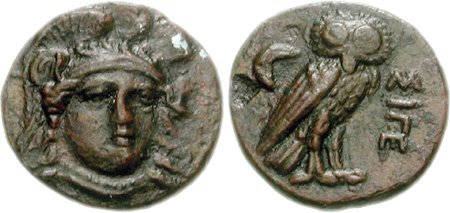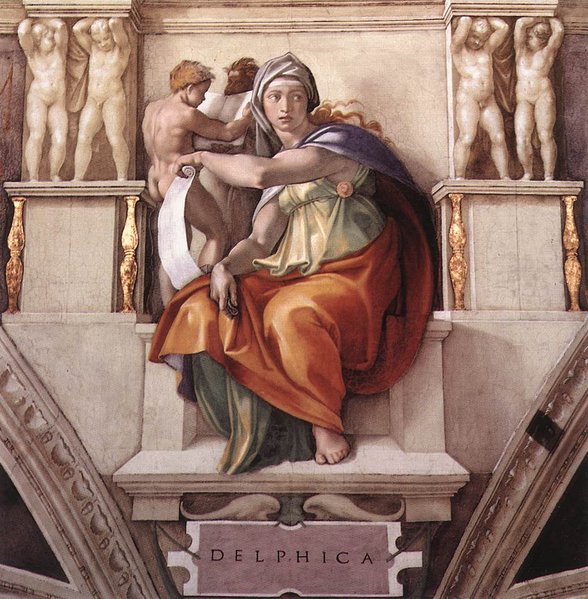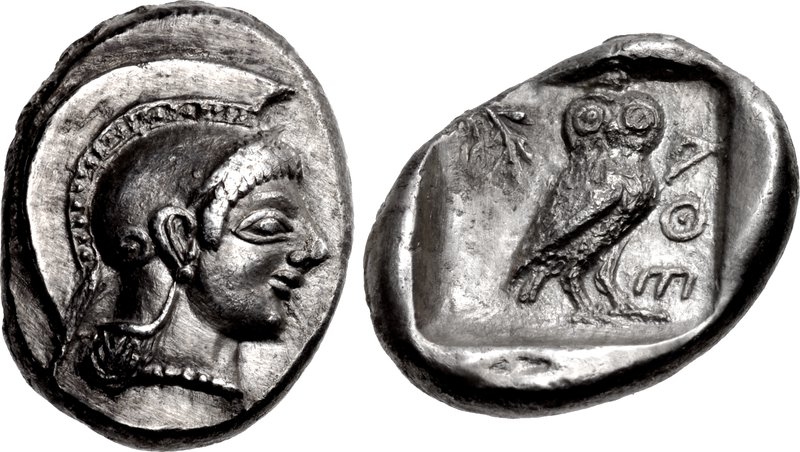|
Hippias (son Of Peisistratus)
Hippias ( grc-gre, Ἱππίας; c. 570 BC – 490 BC) was the last tyrant of Athens, ruling from 527 to 510 BC. He was one of a group of tyrants known as the Peisistratids, which was a group of three tyrants in Ancient Greece. Pisistratus first, and then his son, Hippias, followed after him by Hippias' illegitimate son, Hegesistratos. He was deposed when Cleomenes I of Sparta successfully invaded Athens and forced him to flee to Persia. Early life Hippias was born around 570 BC as the eldest son of Pisistratus, the first tyrant of Athens. When his father was forced to flee to Eretria after insulting Megakles by having intercourse with his daughter in an indecent way, Peisistratos held counsel with his sons. Hippias suggested that they should retake the tyranny, which his father agreed to. Preparations began for which Athens fell to Peisistratos for the third time in 546 BC. Tyrant of Athens Hippias succeeded Peisistratos as tyrant of Athens in 528/7 BC when his father di ... [...More Info...] [...Related Items...] OR: [Wikipedia] [Google] [Baidu] |
Archedice
Archedice ( grc, Ἀρχεδίκη), daughter of Hippias the Peisistratid, and given in marriage by him after the death of Hipparchus to Aeantides, son of Hippoclus, the tyrant of Lampsacus. Archedice is famous for the epitaph given in Thucydides, and ascribed by Aristotle to Simonides, which told that, with father, husband, and sons in sovereign power, still she retained her meekness.Aristotle, ''Rhetoric Rhetoric () is the art of persuasion, which along with grammar and logic (or dialectic), is one of the three ancient arts of discourse. Rhetoric aims to study the techniques writers or speakers utilize to inform, persuade, or motivate parti ...'' 1.9 Notes 5th-century BC Athenians {{AncientGreece-bio-stub ... [...More Info...] [...Related Items...] OR: [Wikipedia] [Google] [Baidu] |
Sigeion
Sigeion (Ancient Greek: , ''Sigeion''; Latin: ''Sigeum'') was an ancient Greek city in the north-west of the Troad region of Anatolia located at the mouth of the Scamander (the modern Karamenderes River). Sigeion commanded a ridge between the Aegean Sea and the Scamander which is now known as Yenişehir and is a part of the Çanakkale district in Çanakkale province, Turkey. The surrounding region was referred to as the Sigean Promonotory, which was frequently used as a point of reference by ancient geographers since it marked the mouth of the Hellespont. The outline of this promontory is no longer visible due to the alluvial activity of the Karamenderes which has filled in the embayment east of Yenişehir. The name 'Sigeion' means 'silent place' and is derived from Ancient Greek (''sigē''), 'silence'; in Classical Antiquity, the name was assumed to be antiphrastic, i.e. indicating a characteristic of the place contrary to reality, since the seas in this region are known for th ... [...More Info...] [...Related Items...] OR: [Wikipedia] [Google] [Baidu] |
Athenian Democracy
Athenian democracy developed around the 6th century BC in the Greek city-state (known as a polis) of Athens, comprising the city of Athens and the surrounding territory of Attica. Although Athens is the most famous ancient Greek democratic city-state, it was not the only one, nor was it the first; multiple other city-states adopted similar democratic constitutions before Athens. By the late 4th century BC as many as half of the over one thousand existing Greek city-states might have been democracies. Athens practiced a political system of legislation and executive bills. Participation was open to adult, male citizens (i.e., not a foreign resident, regardless of how many generations of the family had lived in the city, nor a slave, nor a woman), who "were probably no more than 30 percent of the total adult population". Solon (in 594 BC), Cleisthenes (in 508–07 BC), and Ephialtes (in 462 BC) contributed to the development of Athenian democracy. Cleisthenes broke up the unlimite ... [...More Info...] [...Related Items...] OR: [Wikipedia] [Google] [Baidu] |
Acropolis, Athens
The Acropolis of Athens is an ancient citadel located on a rocky outcrop above the city of Athens and contains the remains of several Ancient Greek architecture, ancient buildings of great architectural and historical significance, the most famous being the Parthenon. The word ''acropolis'' is from the Greek words (''akron'', "highest point, extremity") and (''polis'', "city"). The term acropolis is generic and there are many other acropoleis in Greece. During ancient times the Acropolis of Athens was known also more properly as Cecropia, after the legendary snake, serpent-man, Cecrops I, Cecrops, the supposed first Athenian king. While there is evidence that the hill was inhabited as far back as the fourth millennium BC, it was Pericles (c. 495–429 BC) in the fifth century BC who coordinated the construction of the buildings whose present remains are the site's most important ones, including the Parthenon, the Propylaia_(Acropolis_of_Athens), Propylaea, the Erechtheion and ... [...More Info...] [...Related Items...] OR: [Wikipedia] [Google] [Baidu] |
Delphi
Delphi (; ), in legend previously called Pytho (Πυθώ), in ancient times was a sacred precinct that served as the seat of Pythia, the major oracle who was consulted about important decisions throughout the ancient classical world. The oracle had origins in prehistory and it became international in character and also fostered sentiments of Greek nationality, even though the nation of Greece was centuries away from realization. The Ancient Greece, ancient Greeks considered the centre of the world to be in Delphi, marked by the stone monument known as Omphalos of Delphi, the omphalos (navel). The sacred precinct of Ge or Gaia was in the region of Phocis (ancient region), Phocis, but its management had been taken away from the Phocis (ancient region), Phocians, who were trying to extort money from its visitors, and had been placed in the hands of an Amphictyonic League, amphictyony, or committee of persons chosen mainly from Central Greece. According to the Suda, Delphi took its n ... [...More Info...] [...Related Items...] OR: [Wikipedia] [Google] [Baidu] |
Pythian Priestess
The sibyls (, singular ) were prophetesses or oracles in Ancient Greece. The sibyls prophesied at holy sites. A sibyl at Delphi has been dated to as early as the eleventh century BC by PausaniasPausanias 10.12.1 when he described local traditions in his writings from the second century AD. At first, there appears to have been only a single sibyl. By the fourth century BC, there appear to have been at least three more, Phrygian, Erythraean, and Hellespontine. By the first century BC, there were at least ten sibyls, located in Greece, Italy, the Levant, and Asia Minor. History The English word ''sibyl'' ( or ) is from Middle English, via the Old French and the Latin from the ancient Greek (). Varro derived the name from an Aeolic ''sioboulla'', the equivalent of Attic ''theobule'' ("divine counsel"). This etymology is still widely accepted, although there have been alternative proposals in nineteenth-century philology suggesting Old Italic or Semitic derivation. The fir ... [...More Info...] [...Related Items...] OR: [Wikipedia] [Google] [Baidu] |
Archon
''Archon'' ( gr, ἄρχων, árchōn, plural: ἄρχοντες, ''árchontes'') is a Greek word that means "ruler", frequently used as the title of a specific public office. It is the masculine present participle of the verb stem αρχ-, meaning "to be first, to rule", derived from the same root as words such as monarch and hierarchy. Ancient Greece In the early literary period of ancient Greece the chief magistrates of various Greek city states were called ''archontes''. The term was also used throughout Greek history in a more general sense, ranging from "club leader" to "master of the tables" at '' syssitia'' to "Roman governor". In Athens, a system of three concurrent archons evolved, the three office holders being known as ''archon eponymos'' (), the ''polemarch'' (), and the ''archon basileus'' (). According to Aristotle's '' Constitution of the Athenians'', the power of the king first devolved to the archons, and these offices were filled from the aristocracy by el ... [...More Info...] [...Related Items...] OR: [Wikipedia] [Google] [Baidu] |
Cleisthenes
Cleisthenes ( ; grc-gre, Κλεισθένης), or Clisthenes (c. 570c. 508 BC), was an ancient Athenian lawgiver credited with reforming the constitution of ancient Athens and setting it on a democratic footing in 508 BC. For these accomplishments, historians refer to him as "the father of Athenian democracy." He was a member of the aristocratic Alcmaeonid clan. He was the younger son of Megacles and Agariste making him the maternal grandson of the tyrant Cleisthenes of Sicyon. He was also credited with increasing the power of the Athenian citizens' assembly and for reducing the power of the nobility over Athenian politics. In 510 BC, Spartan troops helped the Athenians overthrow the tyrant Hippias, son of Peisistratus. Cleomenes I, king of Sparta, put in place a pro-Spartan oligarchy headed by Isagoras. But his rival Cleisthenes, with the support of the middle class and aided by democrats, took over. Cleomenes intervened in 508 and 506 BC, but could not stop Cleisthenes and ... [...More Info...] [...Related Items...] OR: [Wikipedia] [Google] [Baidu] |
Thucydides
Thucydides (; grc, , }; BC) was an Athenian historian and general. His ''History of the Peloponnesian War'' recounts the fifth-century BC war between Sparta and Athens until the year 411 BC. Thucydides has been dubbed the father of "scientific history" by those who accept his claims to have applied strict standards of impartiality and evidence-gathering and analysis of cause and effect, without reference to intervention by the gods, as outlined in his introduction to his work. He also has been called the father of the school of political realism, which views the political behavior of individuals and the subsequent outcomes of relations between states as ultimately mediated by, and constructed upon, fear and self-interest. His text is still studied at universities and military colleges worldwide. The Melian dialogue is regarded as a seminal work of international relations theory, while his version of Pericles' Funeral Oration is widely studied by political theorists, historian ... [...More Info...] [...Related Items...] OR: [Wikipedia] [Google] [Baidu] |
Susa
Susa ( ; Middle elx, 𒀸𒋗𒊺𒂗, translit=Šušen; Middle and Neo- elx, 𒋢𒋢𒌦, translit=Šušun; Neo-Elamite and Achaemenid elx, 𒀸𒋗𒐼𒀭, translit=Šušán; Achaemenid elx, 𒀸𒋗𒐼, translit=Šušá; fa, شوش ; he, שׁוּשָׁן ; grc-gre, Σοῦσα ; syr, ܫܘܫ ; pal, 𐭮𐭥𐭱𐭩 or ; peo, 𐏂𐎢𐏁𐎠 ) was an ancient city in the lower Zagros Mountains about east of the Tigris, between the Karkheh and Dez Rivers in Iran. One of the most important cities of the Ancient Near East, Susa served as the capital of Elam and the Achaemenid Empire, and remained a strategic centre during the Parthian and Sasanian periods. The site currently consists of three archaeological mounds, covering an area of around one square kilometre. The modern Iranian town of Shush is located on the site of ancient Susa. Shush is identified as Shushan, mentioned in the Book of Esther and other Biblical books. Name The English name is derived ... [...More Info...] [...Related Items...] OR: [Wikipedia] [Google] [Baidu] |
Darius The Great Of Persia
Darius I ( peo, 𐎭𐎠𐎼𐎹𐎺𐎢𐏁 ; grc-gre, Δαρεῖος ; – 486 BCE), commonly known as Darius the Great, was a Persian ruler who served as the third King of Kings of the Achaemenid Empire, reigning from 522 BCE until his death in 486 BCE. He ruled the empire at its territorial peak, when it included much of Western Asia, parts of the Balkans (Thrace– Macedonia and Paeonia) and the Caucasus, most of the Black Sea's coastal regions, Central Asia, the Indus Valley in the far east, and portions of North Africa and Northeast Africa including Egypt (), eastern Libya, and coastal Sudan. Darius ascended the throne by overthrowing the legitimate Achaemenid monarch Bardiya, whom he later fabricated to be an imposter named Gaumata. The new king met with rebellions throughout his kingdom and quelled them each time; a major event in Darius' life was his expedition to subjugate Greece and punish Athens and Eretria for their participation in the Ionian Revolt. Although ... [...More Info...] [...Related Items...] OR: [Wikipedia] [Google] [Baidu] |





